Citizen science for African dust observed in Finland, 21-23 February 2021
Published in Earth & Environment

On 23 February 2021, a unique case of northern African desert dust reaching Finland, a distance of more than 5000 km, took place. In Finland, atmospheric dust mixed with freezing rain in the south and with snow in the middle parts of the country. At the time, the ground in Finland was covered with snow and ice, allowing colored snow to be easily detectable. This extraordinary event caused citizens to contact us at the Finnish Meteorological Institute (FMI) asking what was happening, what was coloring the snow on the ground, and why orange snow fell from the sky. Within a very short notice of less than an hour, we became two persons who prepared instructions for the public in Finland on how to help us to discover more details in this rare dust event. Hence, citizen contacts with their observations and concerns started our citizen science initiative on Saharan dust. Namely, only later did we discover, using retrospective model analysis combined with magnetic properties of the citizen samples, that the dust originated not only from Sahara but also from Sahel. With citizen science, we refer to the participation of the public in the status and impact assessment in cooperation with scientists, using social media, mobile devices, the Internet, and mass media.
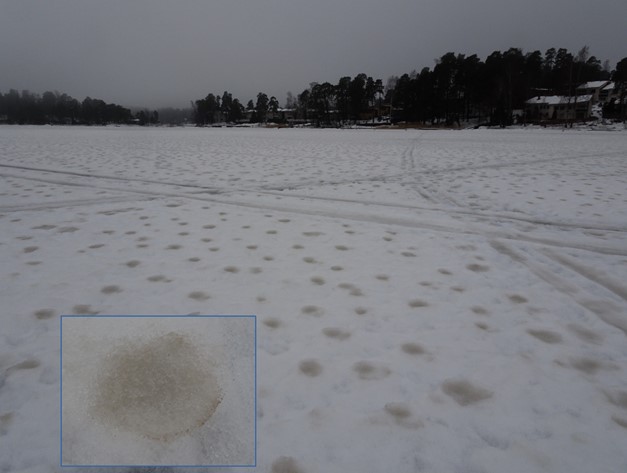
National and local newspapers, radio and television broadcasts also published news pieces about our request for dust samples. Some of our TV meteorologists also announced our request to collect and send dust samples for research. This resulted in a total of 525 sample letters, an unofficial world record of 525 citizen dust sample locations, with one to more than ten samples in each, which we investigated with various methods. The citizens who sent samples to us ranged from kindergarten children with grandparents or kindergarten personnel to retired professors.
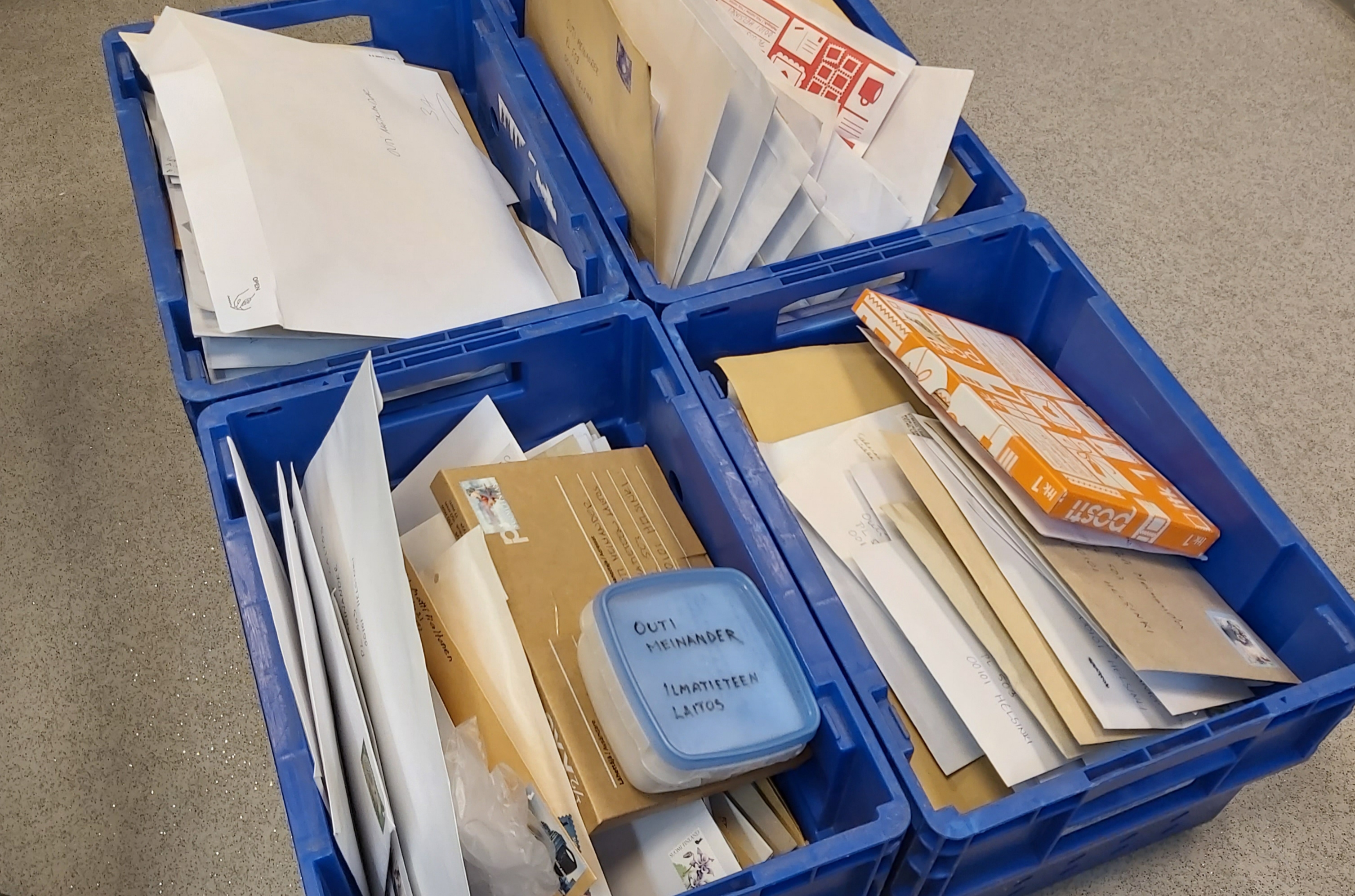
We employed citizen science using the following steps: first, we used Twitter in such a way that our tweets from FMI research, as well as tweets from FMI weather forecasting personnel, were visible on the home page of FMI (www.fmi.fi). Then, our tweets asked citizen observations on dust and information on the location, time and dust color, and if dust was received with rain or snowfall. We also asked for photographs with place and time stamps. For example, one of our tweets gave a brown-tone scale with names for each tone, to identify more precisely the color of the dust the citizens had observed. We soon asked citizens also to specify the temporal development of dust appearance on snow as dust spots, stripes, or even darkening. In addition, we also asked people to collect, filter, evaporate, or decant dust samples according to the instructions provided and send them to FMI for further investigation. We wanted to have a method for citizen samples using equipment that every household has, but we did not want to gain melted snow as such. In Finland, the number one solution that became handy was the usage of coffee filters, since Finns are among the most coffee-drinking nations and every household has coffee filters. Also, evaporation in sauna afterheat to extract dust from snow was used (a very typical Finnish thing)!
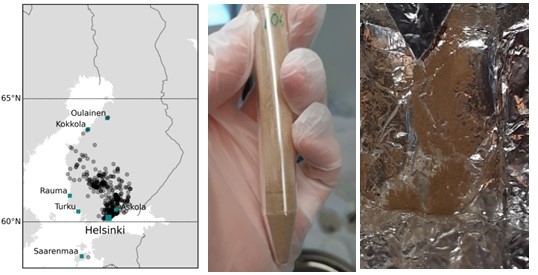
Citizen observations revealed that dust deposition was observed in various yellow, orange, and brown tones, over large areas of the southern part of the country, but with varying intensity from place to place. Citizen science samples were used to verify long-range transport model results for their transport and deposition algorithms, using meteorological data together with the deposition information gained from citizen samples. The geographical distribution of the citizen samples was surprisingly well in agreement with the results of the model calculation on wet and dry deposition. In our case, the dust was deposited with wet deposition only. It turned out that the modeled particle sizes and amounts also agreed well with the laboratory results we obtained using the citizen samples.
The modeling approaches to dust events are the most useful tools, which need to be verified using in situ measurements and satellite data. However, on 21-23 February, satellite images over middle Finland were challenged by the occurrence of clouds, and the northern line of dust deposition could not be identified. A further complication of the event was that although dust deposition occurred primarily with snowfall, areas close to the southern coast of Finland received dust deposition mixed with freezing rain. In this dust event, with deposition in Finland over large land areas but with variable intensity from place to place, citizen observations were the only way to verify where and how much dust deposited on snow.
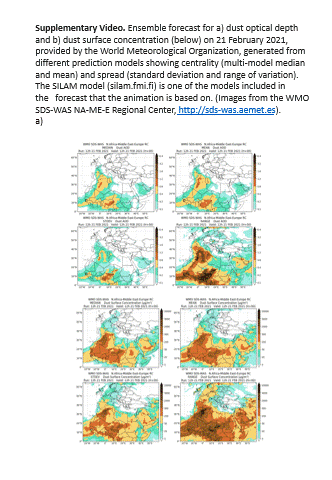
Finland is, in general, an excellent place for studies of post-depositional dust-snow interactions, as seasonal snow, combined with flat terrain and the occurrence of five global snow classes out of six, creates great natural experimental facilities. However, our work was the first citizen science project in Finland related to dust storms or colored snow. This is because dust events or colored snow have been quite rare in Finland. Since Finland is located high up in the north (> 60 deg N), Saharan dust reaches Finland on average once a year and can most often be observed as extraordinarily beautiful reddish sunrises and sunsets, and deposition on the ground is more seldom. Snow in Finland is usually quite clean and white, with no dust or algae, and there are only a couple of previous observations events related to dust or red algae on snow. Wintertime dust events can offer great possibilities to collect dust sample particles to verify modeled and satellite-observed long-range transport and deposition processes, or for ice nuclei research, and to quantify the radiative forcing effects of dust on snow and ice.
We have experienced that citizen science can be a powerful tool to help fill in gaps in data collection. Citizen involvement also increases awareness and increases action in monitoring changes in our environment and interest in environmental research. Many of the Finns who sent in samples wished to hear how research on the samples continues. Therefore, we have provided information for them in the form of a newsletter and news on FMI webpages. The event and resulting citizen interest catalyzed the creation of educational materials on dust transport and deposition (Oranssi Lumi) by an FMI-led team. We also educated the media personnel. More recently, we also provided a contact point via a national web-platform for future citizen observations on dust and colored snow in Finland, in collaboration with the Finnish Environment Center SYKE, Arctic Centre of the University of Lapland and the Finnish Nature Association (Luontoliitto in Finnish). Therefore, citizen science looks a promising way to continue and develop further for the research and assessment of future dust events and colored snow in the changing Arctic climate in Finland.
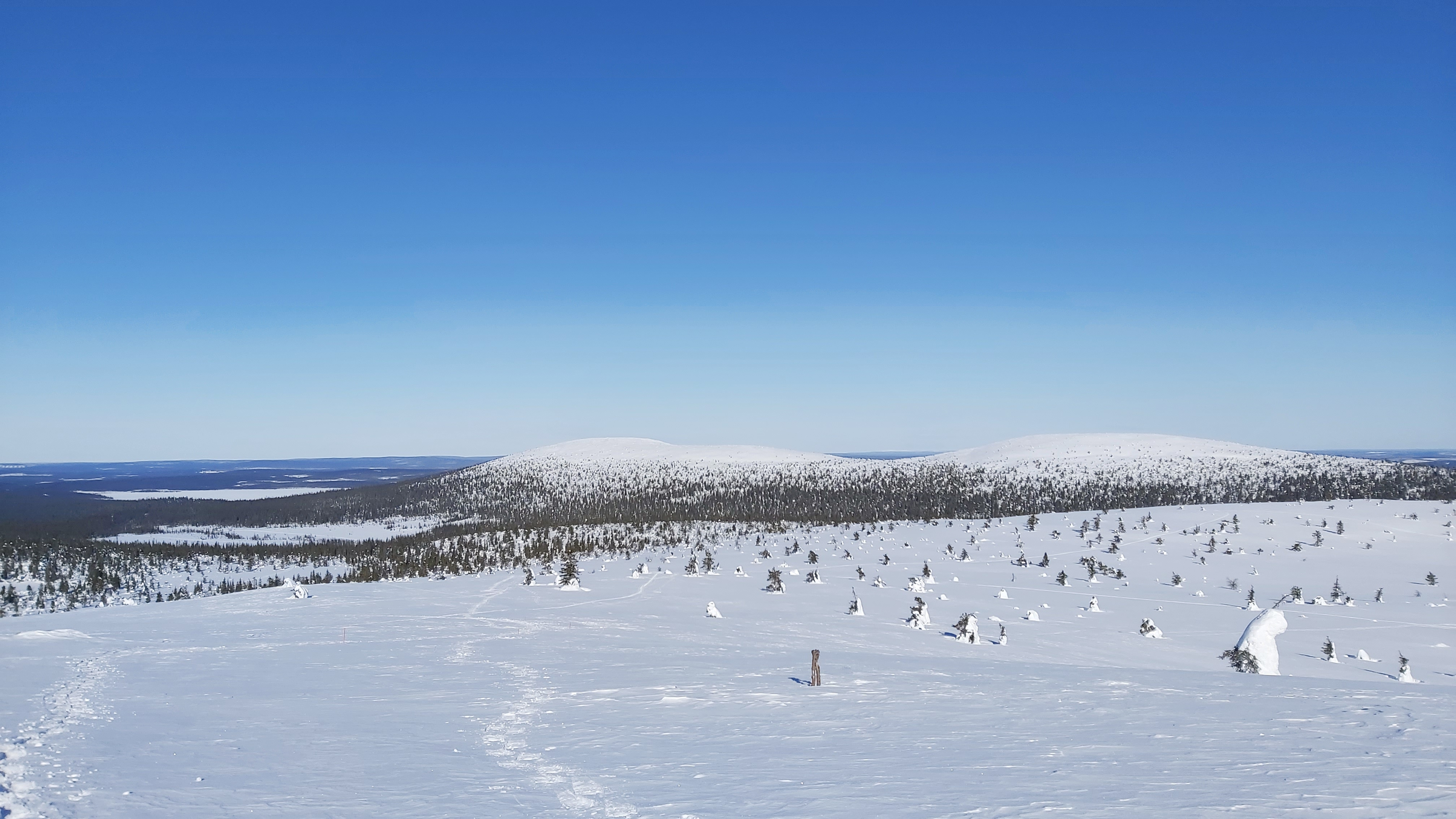
Figures and the video in this blog are from our article https://www.nature.com/articles/s41598-023-46321-7, except the microscope image (Poster), and the photos of citizen letters and Pallas (northern Finland) are from Outi Meinander.
We want to thank and acknowledge all the citizens who participated in our investigations.
Follow the Topic
-
Scientific Reports

An open access journal publishing original research from across all areas of the natural sciences, psychology, medicine and engineering.
Related Collections
With Collections, you can get published faster and increase your visibility.
Reproductive Health
Publishing Model: Hybrid
Deadline: Mar 30, 2026
Sepsis: Treatment, intervention, mortality
Publishing Model: Open Access
Deadline: Dec 23, 2025


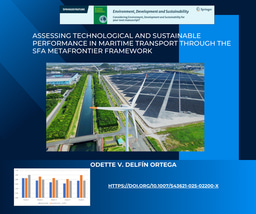
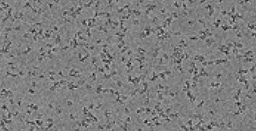
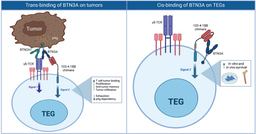
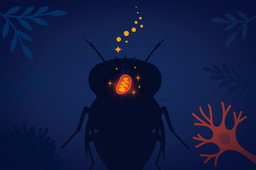
Please sign in or register for FREE
If you are a registered user on Research Communities by Springer Nature, please sign in